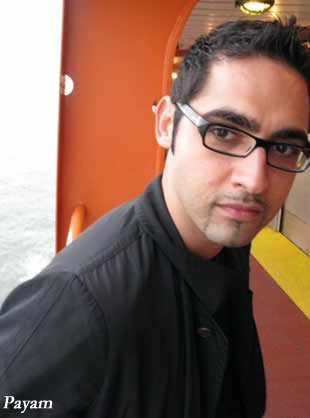 Payam’s approach to photography and lighting is to contextualize the subject as best as possible- He undertakes this approach by setting the subject in the environment that best represents who they are and how they relate to it.
Payam’s approach to photography and lighting is to contextualize the subject as best as possible- He undertakes this approach by setting the subject in the environment that best represents who they are and how they relate to it. The preproduction process involves extensive location scouting, lighting design and research on his subjects so that he is able to arrive to the shoot prepared with knowledge to not only execute technical photograph but also to connect with his sitters based on his previous research as well as the magic that happens during a sitting to create a photograph that truly represents his subjects.
Payam has realized that his sensibilities in lighting and color are derived from the subtle nuances as expressed by the great masters such as Caravaggio and Christian Schad- contemporary photographic masters whose sensibility he takes great inspiration from include Annie Leibovitz, Gregory Crewdson, Philip Lorca Dicorcia. Payam attempts to create a canvas where the eye is forced to play with the intertwined elements in the shot including the subject. He likes to use lines and symmetry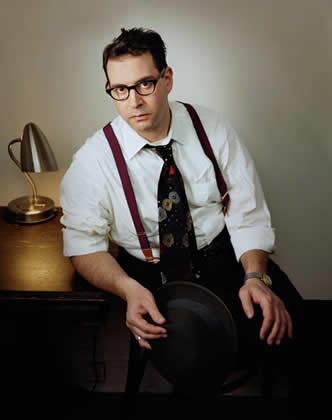 to accomplish this goal- the use of artificial lighting comes into play in this process because it allows Payam to create greater depth.
to accomplish this goal- the use of artificial lighting comes into play in this process because it allows Payam to create greater depth.
Payam was born in Tehran in 1977 and left to Germany in 1986.He calls Santa Barbara, California his home where he resided with his Mother Laya Iravani, his sister Pantea along with his Father Abdullah for 17 years. He attended UCSB where he studied Biopsychology and Sociology and graduated in December 2002. Six months later he moved to NYC to pursue his career in photography.
Bijan Tehrani: Tell us about how you left Iran and your memories from there?
Payam: My most vivid memories of Iran are in the form of snapshots, like the turquoise tiles of a mosque in Shiraz or the light shafts in the bazaar in Tehran, rather than a continuum of emotional recollections. I remember experiencing happiness by being blessed with a loving and supportive family. Iran’s beautiful memories were, however, short-lived as my family had to take political refuge in Germany to escape persecution by the government. Through my father’s connections with the German government, we were offered asylum and left Iran with four or five suitcases never again to look back. Taking refuge in Germany played a pivotal role on my emotional landscape as I was exposed to a huge amount of discrimination as a result of the backlash against the wave of immigration in the early 80s. I saw and experienced a lot of suffering, which opened me up to taking interest in the human condition. The transition was quite hard but I am grateful to have had the experiences for they changed me forever.
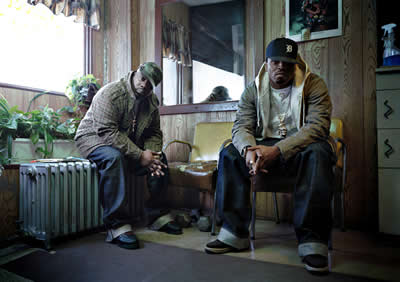 Bijan: Tell us about the teenage years that you spent here in California.
Bijan: Tell us about the teenage years that you spent here in California.
Payam: Assimilation and acceptance were some of the biggest challenges that I first confronted when I arrived to the US, as I had to navigate between three identities and synthesize them into one. I was not very successful at becoming what my peers would accept and thus felt very ostracized. With the adversity that I had already experienced in Germany and in the US, I decided that my identity was going to be a fusion of all cultures, rejecting norms that I did not agree with and accepting the one I did. I turned to photography as a means of finding acceptance and access within a society I was shunned from. I was able to afford my first camera while helping out the family finances by working with my dad at a gas station on my days off from school. My obsession with photography was thus reborn after a long period and many stories of my camera and all the equipment left behind- I could again reclaim what I felt was lost for so many years.
Bijan: You studied in a field that didn’t really directly involve photography. Did these studies help with your photography?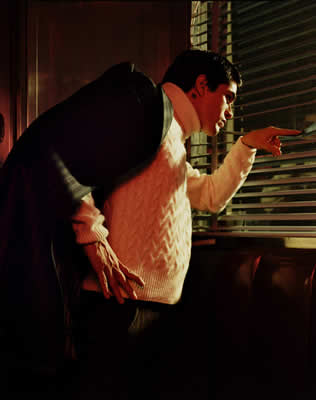
Payam: I attended UC Santa Barbara with the desire of becoming a medical doctor and appeasing the wishes of my family. The fist year of school proved to be a pivotal moment in my education and my life, catalyzed by the death of my grandfather, which precipitated a major depression. I started to look into philosophy, sociology and psychology to better understand myself and ultimately decided to become a psychiatrist. My education however, disenchanted me quickly with the systematic absorption and regurgitation of knowledge. I decided to embrace this realized truth and peruse my photography while completing my education and earning my BA in Sociology. By studying the courses I took interest in, I became more aware of and drawn to, the human mind, our motivation, intention and drives- this knowledge serves me in understanding my subjects and becoming a better portraitist today.
Bijan: How have you been able to work with such great photographers?
Payam: My move to NYC happened by happy accident after I was accepted for an internship by Art and Commerce, an agency that represents Annie Leibovitz. Following the completion of my internship, Jim Moffat, Annie’s rep, arranged an internship with the Leibovitz studio who recommended me to many great photographers once my tenure ended there. I had the good fortune of apprenticing with world-class photographers and synthesizing the information that I learned from each one of them. After some time, I was sought after as a first assistant and lighting director for many large-scale editorial assignments and advertising campaigns where I was able to experiment and execute lighting with the accumulated knowledge that I built over the years.
Bijan: When did your professional photography career begin? 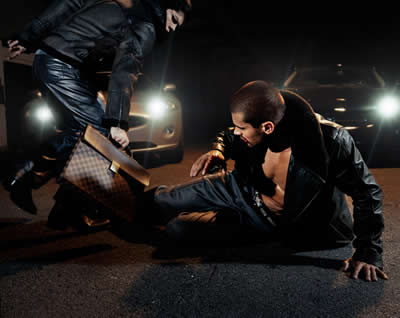 Payam: People always ask me that and it is a really tough question to answer. I began as a photojournalist to fund my schooling though it never really satisfied my creative drive. Living in California left me creatively starved, which motivated me to move- the destination at that time however, unknown. I recall looking at a Harper’s Bazaar spread of Helena Christensen shot by Patrick DeMarchelier and realized that I wanted to shoot at that caliber. Incidentally, a year after working at the Leibovitz studio, I had the good fortune of working with Patrick DeMarchelier. Ever since I started college I chose this path, but I have always “lived” off of photography, financially and emotionally.
Payam: People always ask me that and it is a really tough question to answer. I began as a photojournalist to fund my schooling though it never really satisfied my creative drive. Living in California left me creatively starved, which motivated me to move- the destination at that time however, unknown. I recall looking at a Harper’s Bazaar spread of Helena Christensen shot by Patrick DeMarchelier and realized that I wanted to shoot at that caliber. Incidentally, a year after working at the Leibovitz studio, I had the good fortune of working with Patrick DeMarchelier. Ever since I started college I chose this path, but I have always “lived” off of photography, financially and emotionally.
Bijan: What do you say to people when they question your choice to not move to digital photography?
Payam: Photography for me, as many photographers can attest, is about Doing, it’s about Creating. The tools that one uses to achieve this goal are irrelevant to me. The format and means of capture, digital or analog, become of secondary concern. We live in a very dynamic world, yet with traditional SLR formats, one’s vision is limited by working with two planes. What I love about shooting on a 4×5 body is that it enables me to manipulate perspective, which along with my use of cinematic lighting allows the eye of the viewer to play around on the canvas and hopefully have fun.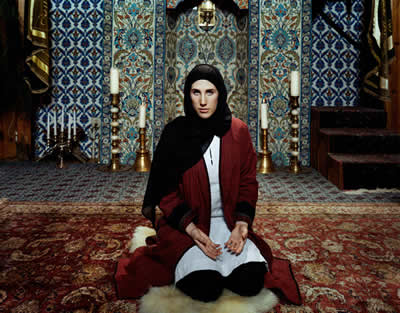
Bijan: Have you ever been tempted to make a film?
Payam: I have always been fascinated by motion picture. Blade Runner, for example, is one of my favorite films as you can pause the movie at any moment and you will see a beautiful photograph. I love the work of Wong Kar-Wai and Luc Besson; their choice of lighting, framing and camera movement is truly an inspiration. I constantly strive to learn from the masters and synthesize that knowledge into my own work. But at times motion picture seems like an unbearable load, because one is responsible for a constant moving image. There is magic about being behind a still camera and capturing one frame at a time which allows me to work slowly and methodically. I am however gravitating towards motion with the advent to the Red Camera and expanding my creative repertoire.
Bijan: How are plans for the future?
Payam: I am very hopeful about the future, because I am fortunate to have the love and support of my family, for I would be nothing without them. I am working on several personal projects while doing my editorial and advertising work. There is a Buddhist proverb, which states, “We are all the same dust in the same ground”. This truly humbles me as a human being and a photographer because it reminds me of mankind’s search for happiness and aversion to pain and suffering, so I treat people with humility and an equal amount of respect and professionalism. I always say that the moment I stop seeing is the moment that I should die.
Bijan: Thanks you for your time and good luck in the future.
To read more about Payam and contacting him, please visit his web-site.

